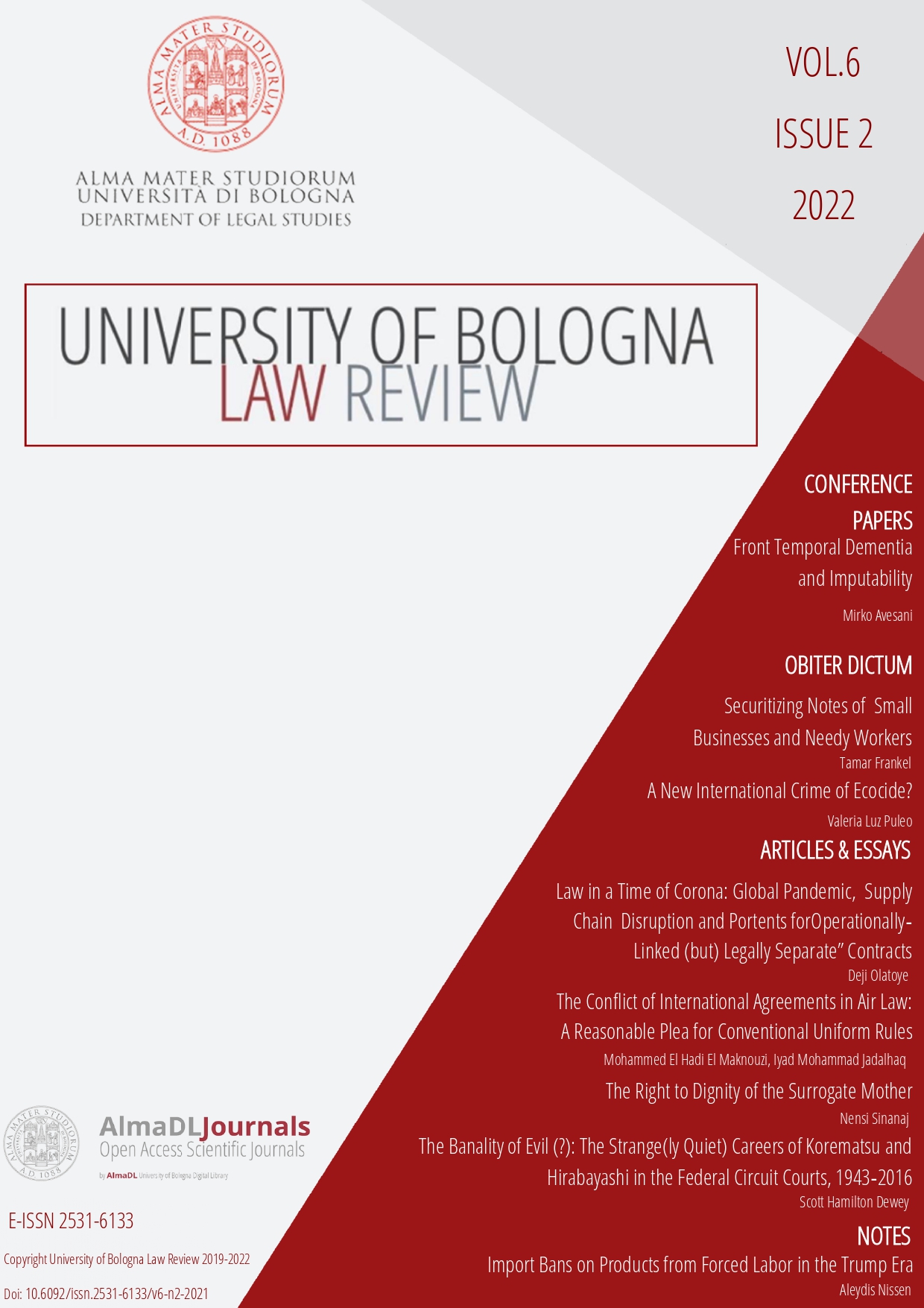The Conflict of International Agreements in Air Law: A Reasonable Plea for Conventional Uniform Rules
DOI:
https://doi.org/10.6092/issn.2531-6133/14144Keywords:
Air Law, Conflict of International Agreements , Conflict of Laws, Legal Harmonisation, Uniform RulesAbstract
This note surveys the roots of a phenomenon called “conflict of international agreements”, which forms a distinctive source of legal uncertainty in trans-border disputes, with a particularly high incidence in the field of air law. The authors suggest that the conflict of international agreements should be understood as an added layer of legal complexity in trans-border air law disputes, beyond the customary questions around applicable law and jurisdictional competence that are commonplace in private international law. The first part of this study maps the main factors that have led to the emergence of this peculiar conflict in the domain of air law. Among them are the following: the fact that national air law legislations have typically been developed by catching up with prior international regulatory initiatives (to the point of inserting, in national provisions, named references to specific treaties); the development of international air law through different generations of treaties with non-overlapping memberships; the possibility for different degrees of membership within the same treaty, and the succession of states. All these factors contribute to the possibility that a judge, tasked with a trans-border air law dispute, might first need to determine the international agreement under which the dispute falls, to settle preliminary questions of applicable law or jurisdiction. Or that he or she might end up—after following the trail of foreign legislation when settling a conflict of laws—having to apply treaties that might not be compatible with the international obligations of his or her jurisdiction of belonging. The second part of this study then looks at a sample of existing strategies for resolving such uncertainty, by looking at the Vienna Convention on the Law of Treaties, the jurisprudence of the French Conseil d’État, and doctrinal commentary. As a result, the study finds that the horizontality of international law and the difficulty posed by non-overlapping treaty memberships (so that different rules apply to different sets of states) is, at present, insurmountable. This leaves the possibility open, for instance, that a competent court might have to choose between (i) deferring to private international law norms that might lead to the application of incompatible treaties binding in a foreign legal system, and (ii) applying the different treaties ratified by the state of the competent court. This is what case-by-case decision-making at the point of adjudication might entail, in the absence of a renewed impetus for harmonisation. It is on this basis that the authors conclude with a reasoned plea for new initiatives aiming at greater uniformity in international air law.
Downloads
Downloads
Published
How to Cite
Issue
Section
License
Copyright (c) 2021 Mohammed El Hadi El Maknouzi, Iyad Mohammad Jadalhaq

This work is licensed under a Creative Commons Attribution 4.0 International License.











